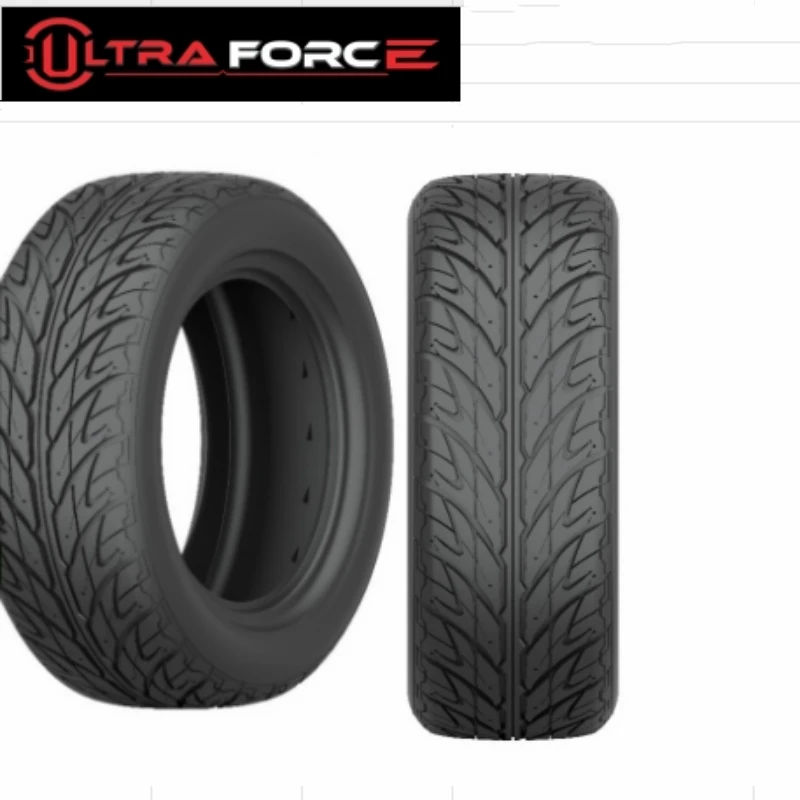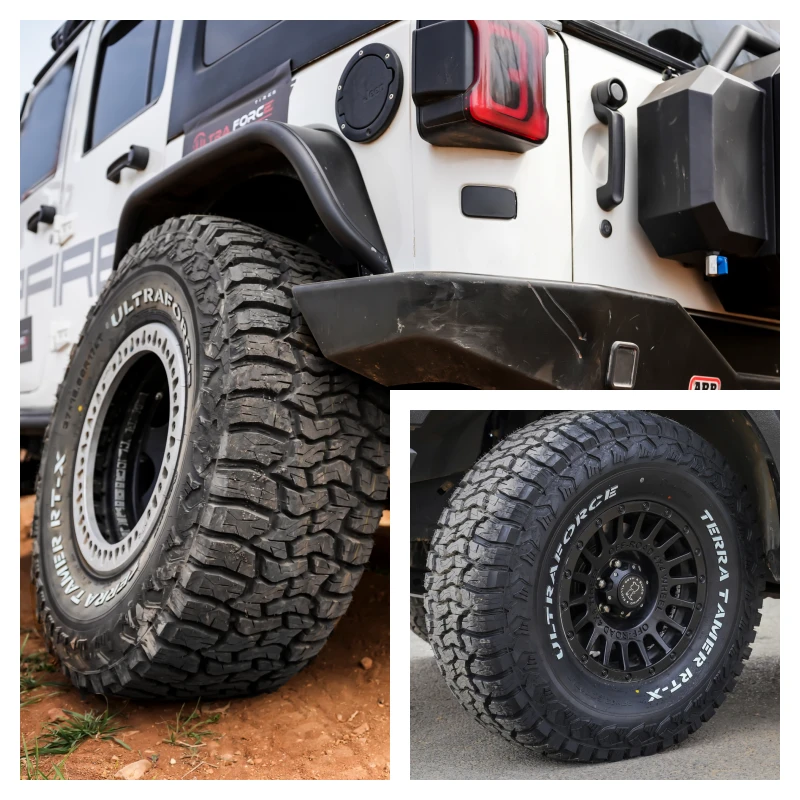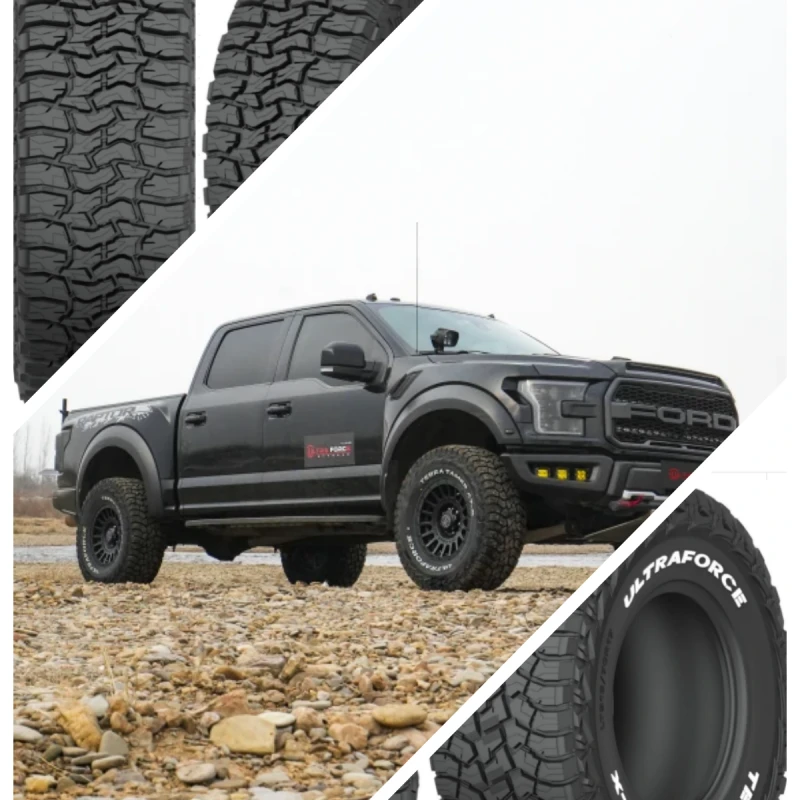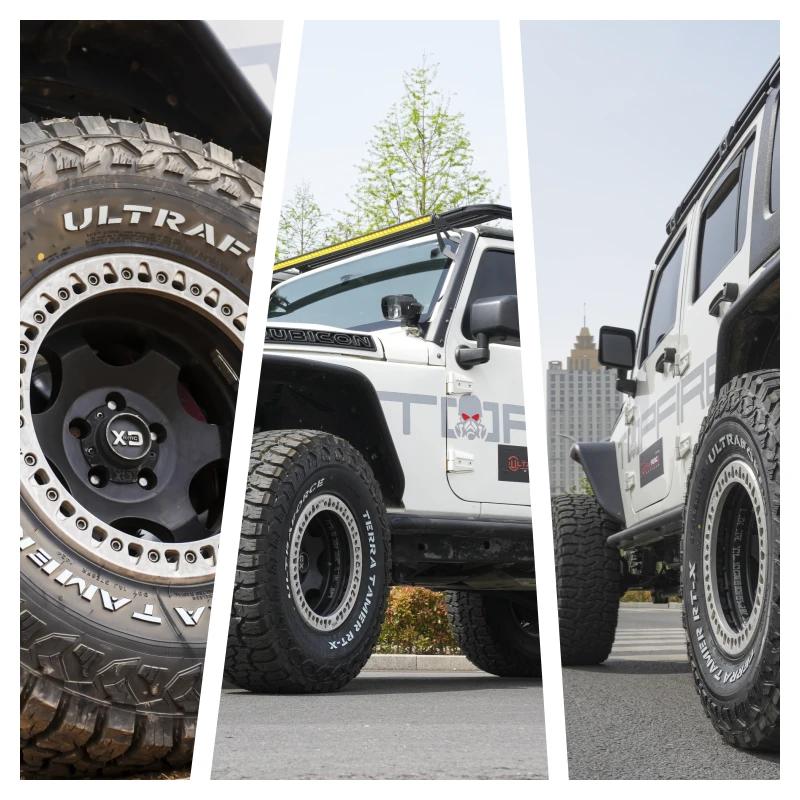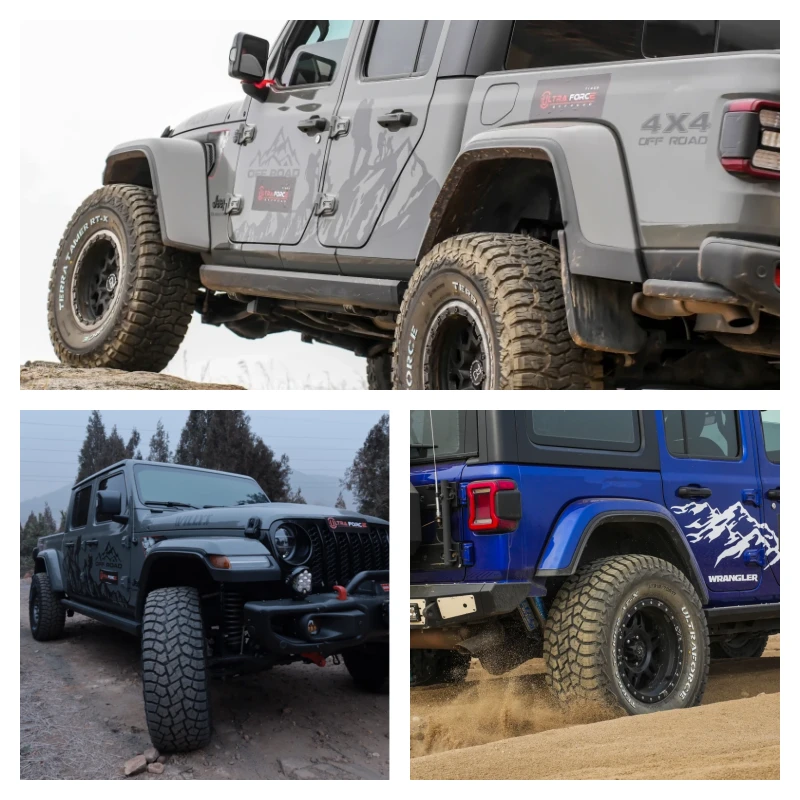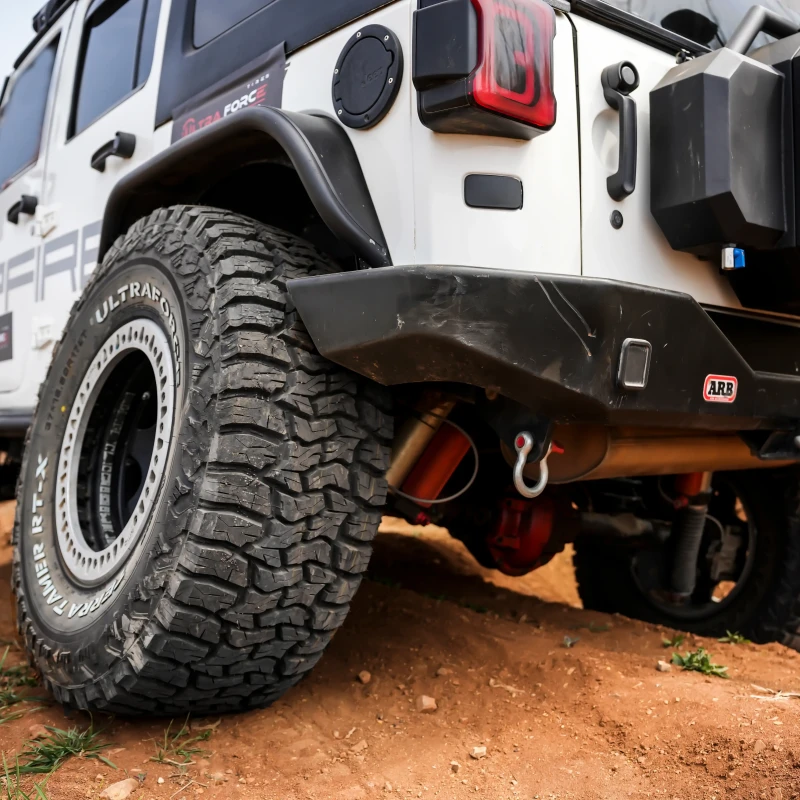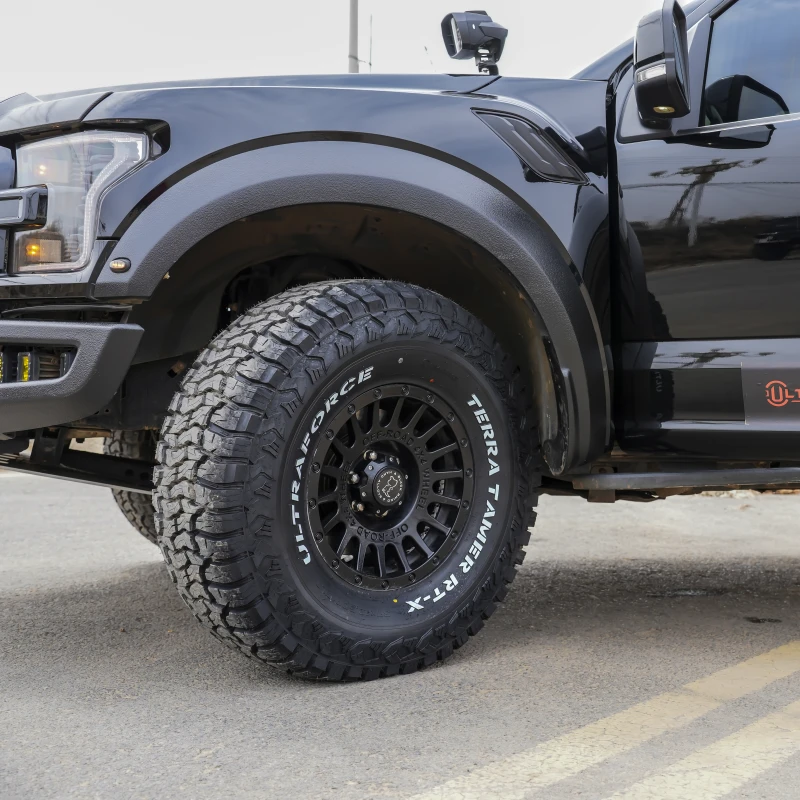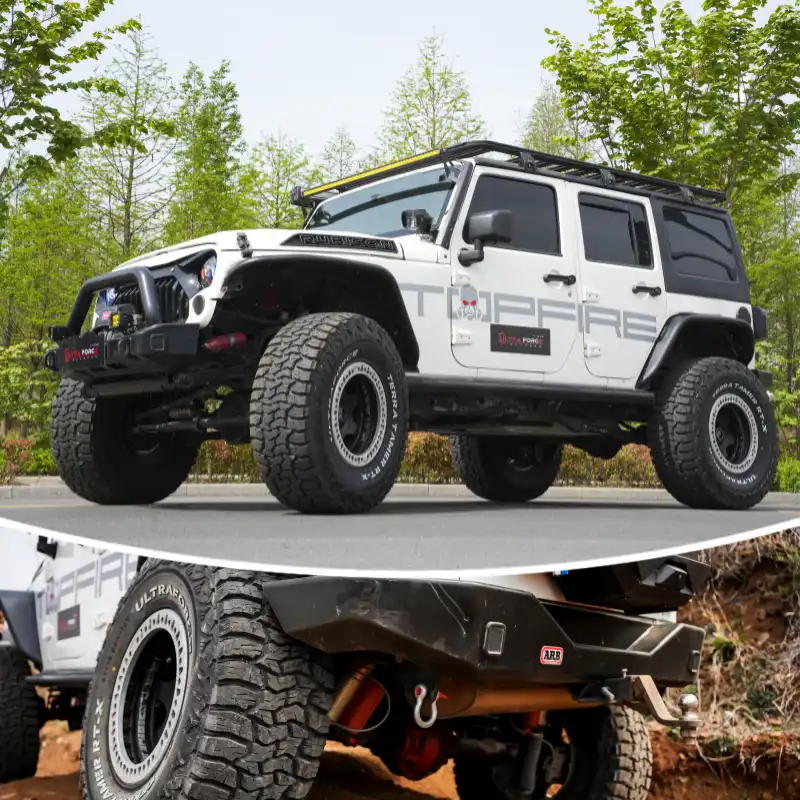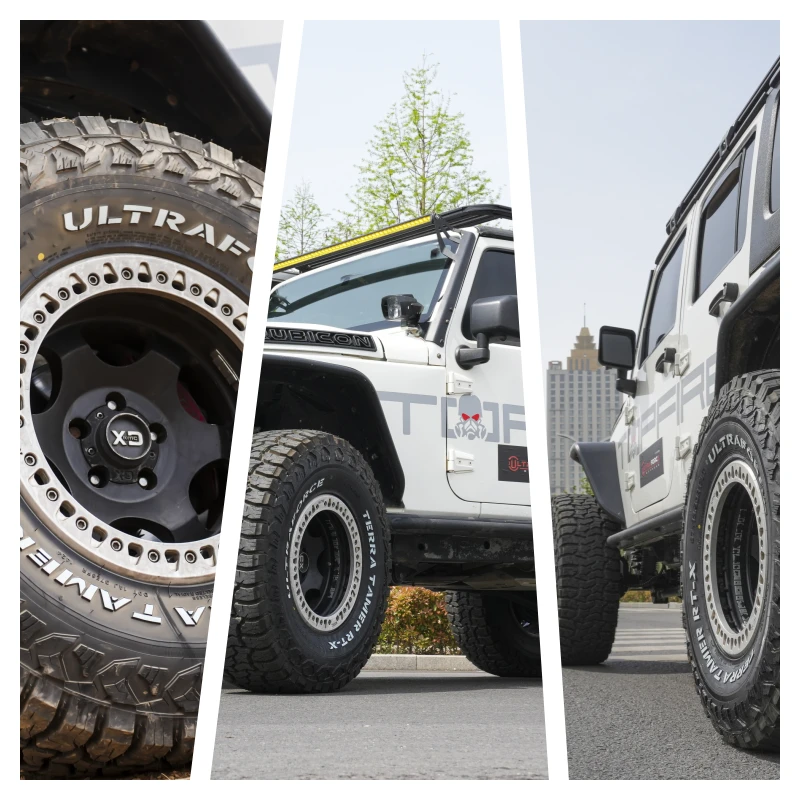Types of Radial Tires
The development of radial tires marked a significant advancement in tire technology, providing numerous benefits over traditional bias-ply tires. Radial tires, characterized by their ply cords arranged at 90 degrees to the direction of travel and a series of belts beneath the tread, have become the standard for modern vehicles. This essay delves into the various types of radial tires, exploring their construction, applications, and advantages.
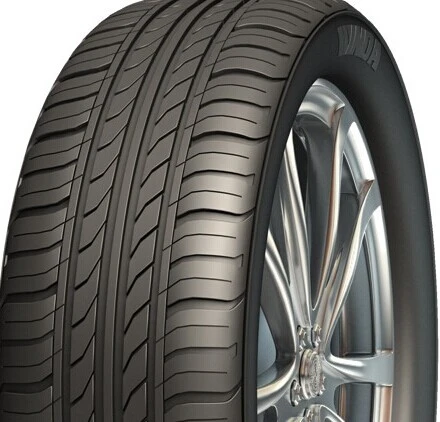
Understanding Radial Tire Construction
Before discussing the specific types of radial tires, it is essential to understand their construction. Radial tires consist of several key components:
Tread: The outermost layer that contacts the road, made from a durable rubber compound.
Belts: Typically made from steel, these provide strength and stability to the tire.
Sidewalls: The rubber portions that connect the tread to the bead, providing flexibility and absorbing shocks.
Plies: Layers of fabric, usually polyester or nylon, that run radially from bead to bead, enhancing strength and flexibility.
Beads: The inner edges of the tire that ensure a tight fit onto the wheel rim.
The radial construction allows for a more flexible sidewall and a stiffer tread area, resulting in improved ride comfort, better traction, and enhanced fuel efficiency.
Types of Radial Tires
Radial tires come in various types, each designed for specific applications and conditions. The primary categories include passenger car tires, light truck tires, off-road tires, high-performance tires, and specialty tires.
1. Passenger Car Radial Tires
Passenger car radial tires are the most common type of radial tires, designed for everyday driving. They can be further classified into several subcategories:
a. All-Season Tires
All-season tires are designed to provide balanced performance in a variety of conditions, including dry, wet, and light snow. They feature moderate tread patterns and rubber compounds that remain flexible across a range of temperatures.
b. Summer Tires
Summer tires, also known as performance tires, are optimized for warm weather conditions. They provide excellent traction on dry and wet roads but are not suitable for snow or ice. These tires have specialized tread patterns and rubber compounds that offer enhanced grip and handling.
c. Winter Tires
Winter tires, or snow tires, are designed for use in cold weather conditions. They feature deeper tread patterns and softer rubber compounds to maintain flexibility in low temperatures. Winter tires provide superior traction on snow and ice, making them essential for regions with harsh winters.
2. Light Truck Radial Tires
Light truck radial tires are designed for vehicles that carry heavier loads and require more durability than passenger cars. They are commonly used on pickup trucks, SUVs, and vans. These tires can be classified into:
a. Highway Terrain (HT) Tires
Highway terrain tires are designed for smooth and quiet rides on paved roads. They offer good traction and handling, making them suitable for everyday driving and highway use.
b. All-Terrain (AT) Tires
All-terrain tires are versatile and designed for both on-road and off-road use. They feature more aggressive tread patterns and stronger sidewalls to handle rough terrains while still providing a comfortable ride on paved surfaces.
c. Mud-Terrain (MT) Tires
Mud-terrain tires are specifically designed for off-road use. They have deep, aggressive tread patterns that provide excellent traction in mud, sand, and other challenging conditions. However, they can be noisier and less comfortable on paved roads.
3. Off-Road Radial Tires
Off-road radial tires are designed for vehicles that frequently travel on rough and uneven terrains. These tires are built to withstand harsh conditions and provide maximum traction. They include:
a. Rock Crawling Tires
Rock crawling tires are engineered for extreme off-road conditions, such as rocky terrains and steep inclines. They feature extremely aggressive tread patterns, reinforced sidewalls, and specialized rubber compounds to prevent punctures and provide optimal grip.
b. Sand Tires
Sand tires, also known as paddle tires, are designed for use on sandy terrains. They have large, paddle-like treads that help the vehicle float on the sand and prevent it from getting stuck.
c. Mud Tires
Similar to mud-terrain light truck tires, these are designed for extreme off-road conditions. They feature deep, widely spaced tread blocks that allow mud to clear out easily, providing continuous traction.
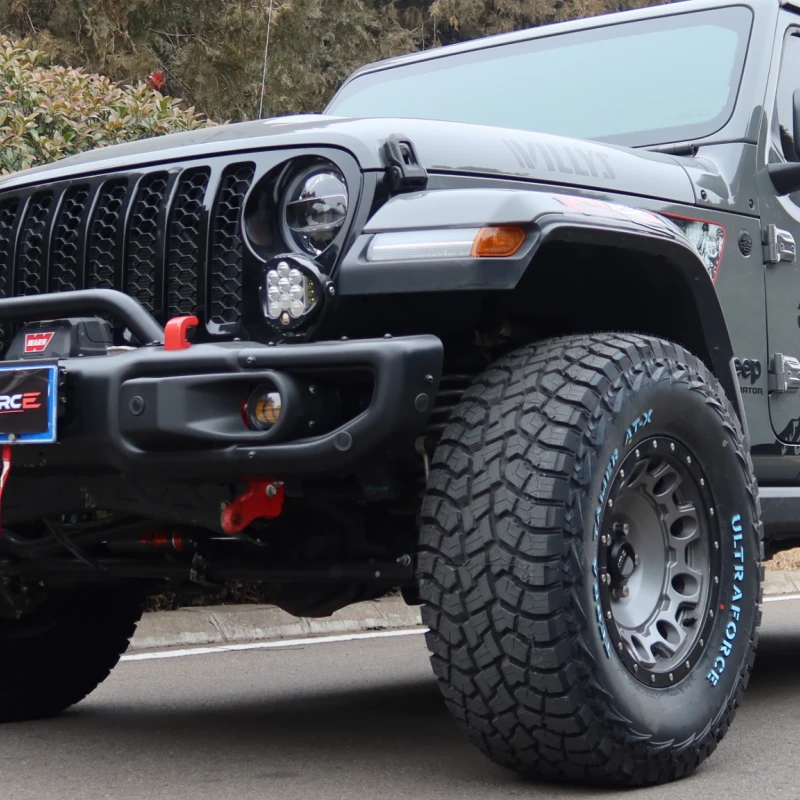
4. High-Performance Radial Tires
High-performance radial tires are designed for sports cars and high-performance vehicles. They provide superior handling, traction, and stability at high speeds. These tires include:
a. Ultra-High-Performance (UHP) Tires
UHP tires are engineered for maximum performance in dry and wet conditions. They feature advanced tread patterns and rubber compounds that offer excellent grip, handling, and braking performance at high speeds.
b. Track Tires
Track tires, also known as racing tires, are designed for use on racing tracks. They have minimal tread patterns and are made from specialized rubber compounds that provide maximum grip on dry surfaces. However, they are not suitable for everyday driving or wet conditions.
5. Specialty Radial Tires
Specialty radial tires are designed for specific applications that require unique features. These include:
a. Run-Flat Tires
Run-flat tires are designed to allow the vehicle to continue driving for a short distance even after a puncture or loss of air pressure. They have reinforced sidewalls that support the vehicle's weight, allowing the driver to reach a safe location for tire replacement.
b. Eco-Friendly Tires
Eco-friendly tires, also known as low rolling resistance tires, are designed to improve fuel efficiency and reduce carbon emissions. They feature specialized rubber compounds and tread designs that minimize energy loss and rolling resistance.
c. Touring Tires
Touring tires are designed for long-distance driving and provide a comfortable, quiet ride. They offer good handling and traction, making them suitable for highway use and road trips.
Advantages of Radial Tires
Radial tires offer several advantages over traditional bias-ply tires, contributing to their widespread adoption:
Improved Ride Comfort: The flexible sidewalls of radial tires absorb shocks and provide a smoother ride, reducing driver fatigue on long journeys.
Enhanced Traction and Handling: Radial tires offer better traction and handling due to their stiffer tread areas and more consistent contact with the road surface.
Increased Fuel Efficiency: Radial tires have lower rolling resistance, which helps improve fuel efficiency and reduce emissions.
Longer Tire Life: The construction of radial tires results in more even tread wear, extending the lifespan of the tires.
Better Heat Dissipation: Radial tires dissipate heat more effectively, reducing the risk of blowouts and improving safety.
Radial Tires vs. Bias Tires
Radial tires offer several key advantages over bias-ply tires, contributing to their dominance in the automotive market. These advantages stem from their construction, which includes ply cords arranged at 90 degrees to the direction of travel and a series of belts beneath the tread. Here’s a detailed look at the benefits, supported by data and examples:
Improved Ride Comfort:Radial tires have more flexible sidewalls compared to bias-ply tires. This flexibility allows radial tires to absorb shocks and road irregularities better, providing a smoother and more comfortable ride. For example, a study by Consumer Reports found that vehicles equipped with radial tires experienced a 15-20% reduction in ride harshness compared to those with bias-ply tires.
Enhanced Traction and Handling:The construction of radial tires allows for a larger and more consistent contact patch with the road. This results in better traction, especially in wet conditions. According to data from Tire Rack, radial tires improve wet traction by approximately 30% compared to bias-ply tires. Additionally, the stiffer tread area of radial tires enhances handling and cornering stability, which is particularly beneficial for high-performance and sports vehicles.
Increased Fuel Efficiency:Radial tires generally have lower rolling resistance than bias-ply tires. Lower rolling resistance means that less energy is required to keep the tire moving, leading to better fuel efficiency. A study by the National Renewable Energy Laboratory (NREL) indicated that switching from bias-ply to radial tires could improve fuel economy by up to 10%. This improvement is significant, especially for commercial vehicles where fuel costs are a major concern.
Longer Tire Life:The radial construction results in more even distribution of load and stress across the tire, leading to more uniform tread wear. This extends the lifespan of the tire. For instance, data from Bridgestone shows that radial tires typically last 40% longer than bias-ply tires under similar driving conditions. This longevity translates to cost savings for drivers, as they need to replace their tires less frequently.
Better Heat Dissipation:Radial tires dissipate heat more effectively than bias-ply tires. This is crucial because excessive heat build-up can lead to tire failure. The effective heat dissipation in radial tires reduces the risk of blowouts, enhancing safety. Michelin’s research demonstrates that radial tires can operate at temperatures 10-15% lower than bias-ply tires, significantly reducing the likelihood of heat-related failures.
Versatility in Applications:Radial tires are available in a wide range of types and sizes, catering to various applications from passenger cars to heavy-duty trucks and specialized off-road vehicles. This versatility ensures that there is a suitable radial tire for virtually any vehicle and driving condition. For example, all-season radial tires provide balanced performance in diverse weather conditions, while off-road radial tires are designed to handle rugged terrains.
In conclusion, radial tires offer substantial advantages over bias-ply tires, including improved ride comfort, better traction and handling, increased fuel efficiency, longer tire life, superior heat dissipation, and versatility. These benefits are supported by extensive data and real-world examples, highlighting why radial tires have become the standard choice for modern vehicles.
How Different Types of Radial Tires Perform in Different Conditions
Radial tires come in various types, each designed to perform optimally under specific conditions. Understanding how different radial tires perform can help drivers make informed decisions based on their driving needs. Here’s a detailed look at the performance of different types of radial tires:
All-Season Radial Tires:All-season radial tires are designed to provide balanced performance in a variety of conditions, including dry, wet, and light snow. They feature moderate tread patterns and rubber compounds that remain flexible across a range of temperatures. According to Consumer Reports, all-season tires offer a 10-15% improvement in traction on wet roads compared to summer tires, making them ideal for regions with moderate climate variations. However, they are not specialized for extreme conditions, and their performance may lag in heavy snow or extreme heat.
Summer Radial Tires:Summer tires, also known as performance tires, are optimized for warm weather conditions. They provide excellent traction on dry and wet roads but are not suitable for snow or ice. Tire Rack’s testing shows that summer tires can improve cornering grip by up to 20% compared to all-season tires, making them a popular choice for sports cars and high-performance vehicles. Their specialized rubber compounds and tread patterns enhance handling and braking performance, but they tend to harden and lose grip in cold temperatures.
Winter Radial Tires:Winter tires, or snow tires, are designed for use in cold weather conditions. They feature deeper tread patterns and softer rubber compounds to maintain flexibility in low temperatures. Studies by the Rubber Manufacturers Association (RMA) indicate that winter tires provide up to 50% better traction on snow and ice compared to all-season tires. This superior traction is crucial for safety in regions with harsh winters. For example, in tests conducted by the Canadian Automobile Association (CAA), vehicles equipped with winter tires stopped 30% faster on icy roads than those with all-season tires.
High-Performance Radial Tires:High-performance radial tires, including ultra-high-performance (UHP) and track tires, are designed for sports cars and high-speed driving. They offer superior handling, traction, and stability. UHP tires feature advanced tread patterns and rubber compounds that provide excellent grip in dry and wet conditions. According to tests by Motor Trend, UHP tires can improve lap times by up to 5% on a racetrack compared to standard all-season tires. Track tires, with minimal tread patterns, offer maximum grip on dry surfaces but are not suitable for everyday driving or wet conditions.
Off-Road Radial Tires:Off-road radial tires are built to handle rough and uneven terrains. They include types such as rock crawling tires, sand tires, and mud tires. Rock crawling tires have extremely aggressive tread patterns and reinforced sidewalls for optimal grip on rocky surfaces. For example, BFGoodrich’s rock crawling tires are favored in off-road competitions for their durability and traction. Sand tires, with large paddle-like treads, are designed to prevent vehicles from sinking in sandy terrains. Mud tires feature deep, widely spaced tread blocks that clear out mud easily, maintaining continuous traction in challenging conditions.
Specialty Radial Tires:Specialty radial tires include run-flat tires, eco-friendly tires, and touring tires. Run-flat tires allow vehicles to continue driving for a short distance after a puncture, providing convenience and safety. According to a report by JD Power, run-flat tires can support driving for up to 50 miles at reduced speeds after a puncture. Eco-friendly tires are designed to improve fuel efficiency and reduce emissions, with studies showing up to a 5% increase in fuel economy compared to standard tires. Touring tires, designed for long-distance driving, offer a comfortable and quiet ride, making them ideal for road trips.
In summary, different types of radial tires are optimized for various conditions, from all-season and summer tires for everyday driving to winter and off-road tires for extreme conditions. High-performance and specialty radial tires cater to specific needs, ensuring that there is a suitable tire for every driver and situation. By understanding these differences, drivers can choose the right radial tire to enhance their vehicle’s performance and safety.
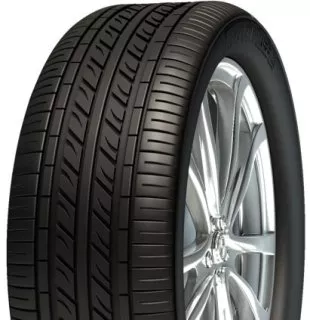
Radial Tires Improve Vehicle Fuel Efficiency
Radial tires significantly contribute to vehicle fuel efficiency through their unique construction and design. Understanding the mechanisms behind this contribution can help drivers make informed decisions to improve their vehicle’s fuel economy. Here’s an in-depth look at how radial tires enhance fuel efficiency, supported by data and examples:
Lower Rolling Resistance:Radial tires typically have lower rolling resistance compared to bias-ply tires. Rolling resistance is the energy required to keep a tire moving at a constant speed. The flexible sidewalls and stiff tread of radial tires reduce energy loss as the tire deforms, leading to lower rolling resistance. According to the U.S. Department of Energy (DOE), reducing rolling resistance by 10% can improve fuel economy by approximately 1-2%. This improvement is significant, especially for vehicles that travel long distances.
Advanced Tread Designs:The tread design of radial tires plays a crucial role in reducing rolling resistance. Radial tires often feature optimized tread patterns that minimize friction with the road surface. For instance, eco-friendly radial tires use specialized tread patterns that reduce energy loss without compromising traction. Michelin’s Energy Saver tires, designed with this principle, are reported to improve fuel efficiency by up to 4% compared to standard radial tires.
Specialized Rubber Compounds:The rubber compounds used in radial tires are formulated to balance durability and low rolling resistance. These compounds are engineered to minimize energy loss during tire deformation. For example, Bridgestone’s Ecopia tires use a high-silica compound that enhances fuel efficiency by reducing rolling resistance. Tests show that vehicles equipped with Ecopia tires can achieve up to a 5% increase in fuel economy.
Improved Aerodynamics:Radial tires contribute to better vehicle aerodynamics by maintaining a more consistent contact patch with the road. This consistency reduces turbulence and drag, which can impact fuel efficiency. Studies by the Society of Automotive Engineers (SAE) indicate that improved aerodynamics from radial tires can lead to a 1-2% increase in fuel efficiency, particularly at higher speeds where aerodynamic drag is more pronounced.
Weight Reduction:Radial tires are generally lighter than bias-ply tires due to their construction. The reduced weight contributes to lower rotational mass, which means the engine requires less energy to turn the wheels. A study by the Transportation Research Board (TRB) found that a 10% reduction in tire weight can improve fuel efficiency by approximately 1-2%. This benefit is particularly important for commercial vehicles and fleets where cumulative weight savings can lead to substantial fuel cost reductions.
Real-World Examples:Real-world examples highlight the impact of radial tires on fuel efficiency. A fleet study by Goodyear demonstrated that switching to fuel-efficient radial tires resulted in a 3-4% improvement in fuel economy for long-haul trucks. Similarly, the California Energy Commission (CEC) reported that vehicles equipped with low rolling resistance radial tires saved an average of 60 gallons of fuel annually, translating to significant cost savings for drivers.
Environmental Impact:By improving fuel efficiency, radial tires also contribute to reducing greenhouse gas emissions. The Environmental Protection Agency (EPA) estimates that for every gallon of gasoline saved, about 20 pounds of carbon dioxide emissions are avoided. Therefore, the fuel savings achieved through radial tires directly contribute to lowering the carbon footprint of vehicles.
In conclusion, radial tires enhance vehicle fuel efficiency through lower rolling resistance, advanced tread designs, specialized rubber compounds, improved aerodynamics, and weight reduction. These factors collectively result in significant fuel savings and reduced environmental impact. Real-world data and studies support the effectiveness of radial tires in improving fuel economy, making them a valuable choice for drivers looking to reduce fuel costs and promote sustainability.
Factors To Consider When Choosing a Suitable Radial Tire
Choosing the right radial tire for a vehicle involves considering several factors to ensure optimal performance, safety, and longevity. Here's a detailed look at the key factors to consider, supported by data and examples:
Vehicle Type and Usage:The type of vehicle and its primary usage are crucial in selecting the right radial tire. Passenger cars, SUVs, trucks, and off-road vehicles have different requirements. For instance, a study by the Tire and Rubber Association of Canada (TRAC) highlights that all-terrain tires are ideal for SUVs and light trucks that encounter both highway and off-road conditions, while highway terrain (HT) tires are best suited for vehicles primarily used on paved roads.
Driving Conditions:Consider the typical driving conditions, including climate and road types. For example, if you live in an area with harsh winters, winter tires with deep tread patterns and softer rubber compounds are essential for safety and performance. According to data from the Canadian Automobile Association (CAA), winter tires improve braking distance by up to 30% on icy roads compared to all-season tires.
Tread Pattern and Design:The tread pattern of a tire affects its grip, noise level, and wear rate. All-season tires have moderate tread patterns suitable for various conditions, while summer tires feature specialized patterns for enhanced dry and wet traction. Mud-terrain tires have aggressive treads for off-road use. Bridgestone's research indicates that tires with optimized tread patterns can reduce rolling resistance by up to 10%, improving fuel efficiency.
Load Capacity and Speed Rating:Ensure that the tire's load capacity and speed rating match your vehicle's specifications. Overloading tires can lead to premature wear and potential failure. The Tire and Rim Association provides guidelines on load and speed ratings, emphasizing the importance of choosing tires that can handle the vehicle's weight and intended speed. For example, high-performance tires have higher speed ratings to support sports cars and high-speed driving.
Tire Size:Selecting the correct tire size is crucial for safety and performance. The size is indicated by a series of numbers and letters on the tire's sidewall, such as P215/65R16. This notation includes the tire's width, aspect ratio, construction type (radial), and rim diameter. Using the wrong size can affect the vehicle's handling, fuel efficiency, and speedometer accuracy. The National Highway Traffic Safety Administration (NHTSA) advises consulting the vehicle's manual or a professional to ensure the correct tire size.
Brand and Quality:The quality and reputation of the tire brand are important considerations. Reputable brands like Michelin, Bridgestone, and Goodyear invest heavily in research and development, resulting in superior products. Consumer Reports' annual tire ratings consistently show that premium brands outperform lesser-known brands in terms of durability, traction, and overall performance.
Fuel Efficiency:Consider tires designed for fuel efficiency if you aim to reduce fuel consumption. Low rolling resistance tires can improve fuel economy by reducing the energy needed to keep the tire rolling. According to the U.S. Department of Energy, using fuel-efficient tires can save drivers up to 3% in fuel costs annually, which is significant over the tire's lifespan.
Cost and Warranty:While budget is a significant factor, it’s essential to balance cost with quality and performance. Investing in high-quality tires can save money in the long run by reducing fuel costs and extending tire life. Additionally, consider the warranty offered by the manufacturer. Many reputable brands offer warranties covering tread life, manufacturing defects, and road hazards. For example, Michelin offers warranties up to 80,000 miles for some models, providing peace of mind and long-term value.
In conclusion, selecting the right radial tire involves considering the vehicle type and usage, driving conditions, tread pattern, load capacity, tire size, brand quality, fuel efficiency, and cost. By evaluating these factors, drivers can choose tires that enhance their vehicle's performance, safety, and fuel efficiency, ensuring a smooth and reliable driving experience.
How Do Radial Tires Improve Vehicle Handling and Stability?
Radial tires significantly enhance vehicle handling and stability, thanks to their unique construction and design features. Here's a detailed look at how radial tires achieve this, supported by data and examples:
Construction and Flexibility:Radial tires have a construction that includes ply cords arranged at 90 degrees to the direction of travel, along with a series of belts beneath the tread. This design allows the sidewalls to be more flexible while maintaining a stiffer tread area. The flexibility of the sidewalls helps absorb road shocks and maintain better contact with the road surface, improving handling and stability. According to Bridgestone, this construction reduces tire deformation during cornering, leading to more predictable and responsive handling.
Larger Contact Patch:The design of radial tires creates a larger and more consistent contact patch with the road compared to bias-ply tires. A larger contact patch means more rubber is in contact with the road, which enhances traction and stability. Data from Tire Rack shows that radial tires provide up to 20% more road contact area, resulting in improved grip and better control, especially during high-speed driving and cornering.
Better Heat Dissipation:Radial tires are better at dissipating heat than bias-ply tires due to their construction. Efficient heat dissipation reduces the risk of overheating, which can lead to tire failure. The cooler operating temperatures of radial tires enhance their performance and durability. Michelin's research indicates that radial tires can operate at temperatures up to 15% lower than bias-ply tires, improving overall stability and reducing the likelihood of blowouts.
Advanced Tread Patterns:Radial tires feature advanced tread patterns designed to maximize grip and stability. For instance, high-performance radial tires have asymmetrical or directional tread patterns that enhance cornering stability and reduce hydroplaning on wet surfaces. The U.S. National Highway Traffic Safety Administration (NHTSA) highlights that tires with advanced tread designs improve vehicle handling and reduce stopping distances by up to 15% in wet conditions.
Reinforced Sidewalls:The sidewalls of radial tires are often reinforced with additional materials, such as steel belts or synthetic fabrics. These reinforcements provide extra strength and resistance to punctures, contributing to better handling and stability. Goodyear’s research demonstrates that reinforced sidewalls in radial tires reduce the risk of tire blowouts and improve vehicle stability, particularly in heavy-duty applications like light trucks and SUVs.
Performance in Various Conditions:Radial tires are designed to perform well in a variety of conditions, from dry and wet roads to light snow and off-road terrains. All-season radial tires, for example, provide balanced performance in diverse weather conditions, while high-performance radial tires excel in dry and wet conditions. Winter radial tires offer superior traction on snow and ice, improving handling and stability in cold weather. According to tests by Consumer Reports, winter radial tires can enhance vehicle control and reduce stopping distances by up to 30% on icy roads compared to all-season tires.
Stability at High Speeds:Radial tires are designed to maintain stability at high speeds, making them ideal for high-performance vehicles and sports cars. The stiff tread area and advanced rubber compounds used in radial tires provide excellent grip and reduce tire deformation at high speeds. Testing by Motor Trend shows that high-performance radial tires improve lap times and cornering stability by up to 10% compared to standard tires, demonstrating their effectiveness in high-speed scenarios.
Enhanced Steering Response:The construction and tread design of radial tires contribute to improved steering response. The consistent contact patch and reduced sidewall flex result in more precise steering inputs and better feedback from the road. This enhances the driver’s ability to control the vehicle, especially during sudden maneuvers or emergency situations. Studies by the Society of Automotive Engineers (SAE) indicate that vehicles equipped with radial tires show a 15% improvement in steering precision and responsiveness.
In conclusion, radial tires improve vehicle handling and stability through their unique construction, larger contact patch, better heat dissipation, advanced tread patterns, reinforced sidewalls, and performance across various conditions. These features collectively enhance traction, control, and safety, making radial tires a superior choice for drivers seeking improved handling and stability.
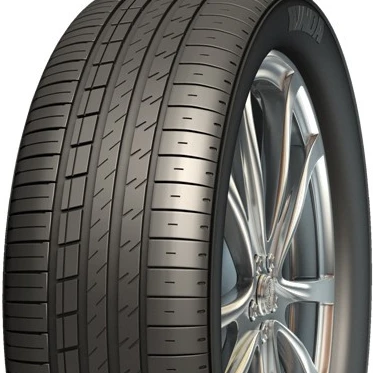
What Maintenance Practices are Essential for Prolonging The Life of Radial Tires?
Proper maintenance is crucial for prolonging the life of radial tires and ensuring optimal performance. Here are essential maintenance practices, supported by data and examples, to help extend the lifespan of radial tires:
Regular Tire Inspections:Regularly inspecting your tires for signs of wear, damage, and proper inflation is essential. Look for cuts, punctures, cracks, and uneven tread wear. According to the National Highway Traffic Safety Administration (NHTSA), regular inspections can prevent tire failure and improve safety. A survey by the Rubber Manufacturers Association (RMA) found that only 17% of drivers inspect their tires regularly, highlighting the need for increased awareness.
Proper Tire Inflation:Maintaining the correct tire pressure is critical for tire longevity. Under-inflated or over-inflated tires can lead to uneven tread wear and reduce fuel efficiency. The U.S. Department of Energy states that properly inflated tires can improve fuel economy by up to 3%. Check tire pressure at least once a month and before long trips using a reliable tire pressure gauge. Refer to the vehicle’s owner’s manual or the tire placard for the recommended pressure.
Tire Rotation:Regularly rotating your tires helps ensure even tread wear and extends tire life. The Tire Industry Association (TIA) recommends rotating tires every 5,000 to 8,000 miles. Different rotation patterns may be required depending on the type of vehicle and tires. For example, a front-wheel-drive vehicle might use a forward cross pattern, while a rear-wheel-drive vehicle could use a rearward cross pattern.
Wheel Alignment:Proper wheel alignment ensures that your tires wear evenly and the vehicle handles correctly. Misaligned wheels can cause uneven tire wear, reducing the lifespan of your tires. The American Automobile Association (AAA) advises checking wheel alignment at least once a year or whenever you notice uneven tread wear or the vehicle pulling to one side. Alignment issues can stem from hitting potholes, curbs, or other road hazards.
Balancing Tires:Tire balancing involves equalizing the weight distribution of the tire and wheel assembly to prevent vibrations and uneven wear. Unbalanced tires can lead to premature wear and affect ride comfort. The Tire and Rubber Association of Canada (TRAC) recommends balancing tires when installing new tires, after repairs, or if you notice vibration while driving. Properly balanced tires contribute to a smoother ride and longer tire life.
Maintaining Proper Load:Avoid overloading your vehicle, as excessive weight can strain the tires and lead to premature wear or failure. The load capacity of tires is indicated on the sidewall and in the vehicle’s owner’s manual. Adhering to the manufacturer’s load recommendations ensures the tires can support the vehicle’s weight safely. The NHTSA reports that overloading is a leading cause of tire blowouts, emphasizing the importance of maintaining proper load limits.
Avoiding Harsh Driving Conditions:Harsh driving conditions, such as aggressive driving, high speeds, and frequent braking, can accelerate tire wear. Driving smoothly and avoiding rapid acceleration, hard braking, and sharp turns can help extend the life of your tires. According to research by Michelin, smooth driving can reduce tire wear by up to 20%, contributing to longer tire life and improved safety.
Using Seasonal Tires Appropriately:Using the right tires for the season and driving conditions can prolong tire life. Winter tires should be used in cold weather, while summer or all-season tires are suitable for warmer conditions. Using winter tires year-round can lead to faster tread wear due to their softer rubber compounds. A study by Consumer Reports found that switching between winter and summer tires can improve overall tire longevity and performance.
Proper Storage:If you need to store tires, ensure they are stored properly to prevent damage. Store tires in a cool, dry place away from direct sunlight, heat sources, and chemicals. Tires should be stored upright if mounted on rims or stacked if unmounted. The Rubber Manufacturers Association (RMA) advises against storing tires near ozone-generating devices, such as electric motors, as ozone can deteriorate the rubber.
In conclusion, proper maintenance practices are essential for prolonging the life of radial tires. Regular inspections, maintaining correct tire pressure, tire rotation, wheel alignment, balancing, avoiding overloading, smooth driving, using seasonal tires appropriately, and proper storage are key practices that ensure optimal tire performance and longevity. By following these practices, drivers can maximize their investment in radial tires and enhance safety on the road.
Conclusion
Radial tires have revolutionized the automotive industry, offering significant improvements in comfort, performance, and safety. The various types of radial tires, including passenger car tires, light truck tires, off-road tires, high-performance tires, and specialty tires, cater to a wide range of driving needs and conditions. As technology continues to advance, radial tires will likely evolve further, providing even greater benefits to drivers worldwide.
If you would like to know more, please feel free to contact us.
